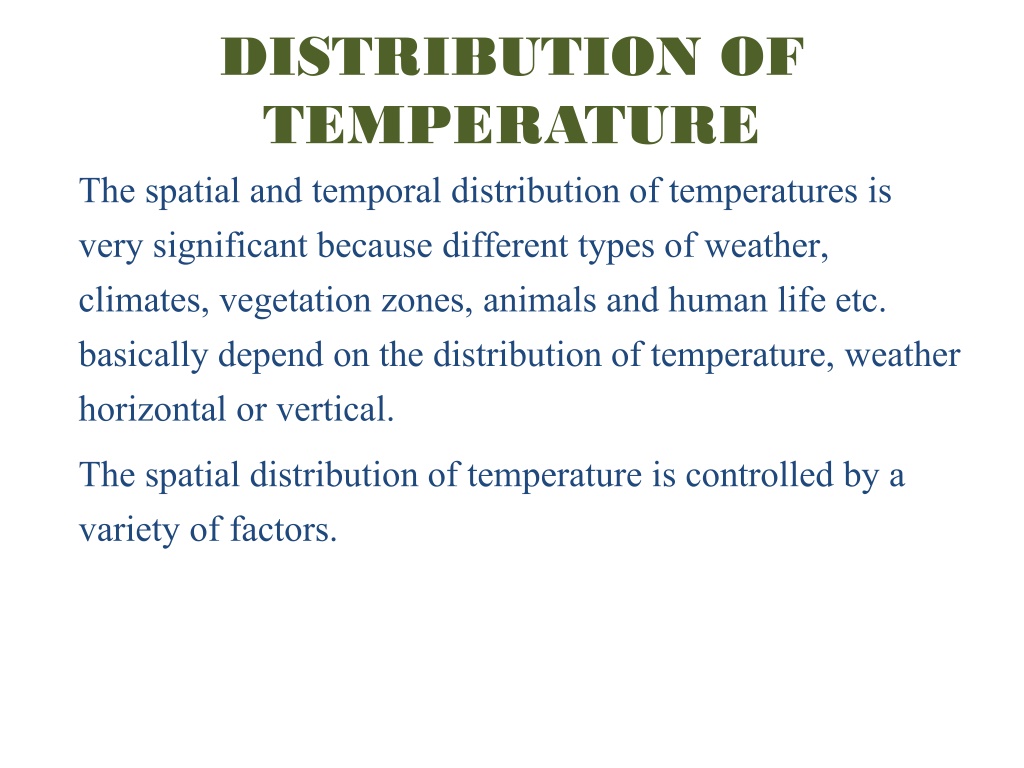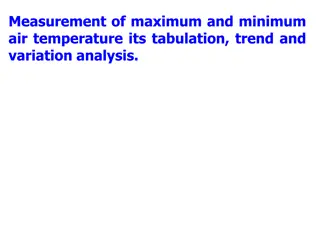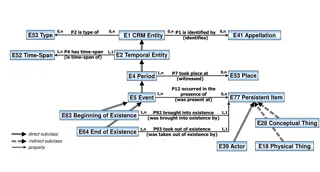Understanding the Spatial and Temporal Distribution of Temperature
The spatial and temporal distribution of temperatures plays a crucial role in determining weather patterns, climates, vegetation zones, and wildlife habitats. Factors such as latitude, altitude, distance from the coast, and prevailing winds influence the distribution of temperature both horizontally and vertically, impacting various aspects of our environment. The vertical distribution of temperature shows a decrease with increasing height in the troposphere, with varying rates depending on the season.
Download Presentation

Please find below an Image/Link to download the presentation.
The content on the website is provided AS IS for your information and personal use only. It may not be sold, licensed, or shared on other websites without obtaining consent from the author. Download presentation by click this link. If you encounter any issues during the download, it is possible that the publisher has removed the file from their server.
E N D
Presentation Transcript
DISTRIBUTION OF TEMPERATURE The spatial and temporal distribution of temperatures is very significant because different types of weather, climates, vegetation zones, animals and human life etc. basically depend on the distribution of temperature, weather horizontal or vertical. The spatial distribution of temperature is controlled by a variety of factors.
Temperature distribution Temperature distribution Distribution of temperature Spatial distribution Temporal distribution Horizontal distribution (Regional Distribution) Changes according to Time Vertical distribution
Factors controlling the distribution of temperature Latitude Altitude Distance from the coast Nature of land and Water Nature of Ground slope Prevailing Winds Ocean currents
VERTICAL DISTRIBUTION OF TEMPERATURE
Temperature decrease with increasing height in the troposphere but the rate of decrease varies according to seasons,






















